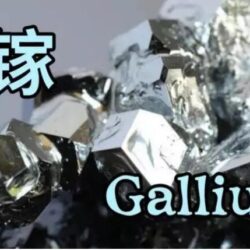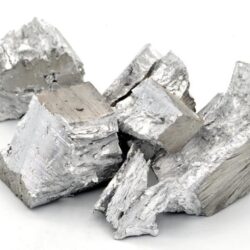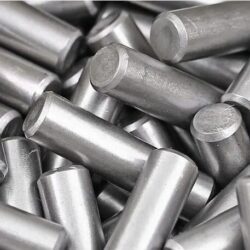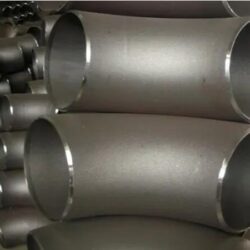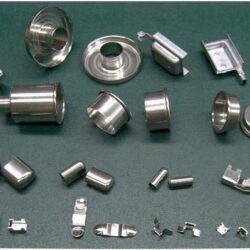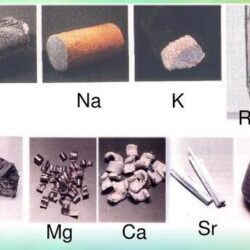In metallurgy, non-ferrous metals are metals or alloys that do not contain iron (Allotropes of iron ferrite) in appreciable amounts.All pure metals are non-ferrous elements, except for iron (Fe).

Non ferrous metal, also known as non-ferrous metal in a narrow sense, is a general term for all metals except iron, manganese and chromium. Nonferrous Metals in a broad sense also include nonferrous alloys.
Nonferrous alloy is an alloy formed by taking a nonferrous metal as the matrix (usually more than 50%) and adding one or several other elements. Nonferrous metals usually refer to all metals except iron (and sometimes manganese and chromium) and iron-based alloys. Nonferrous metals can be divided into heavy metals (such as copper, lead and zinc), light metals (such as aluminum and magnesium), precious metals (such as gold, silver and platinum) and rare metals (such as tungsten, molybdenum, germanium, lithium, lanthanum and uranium).
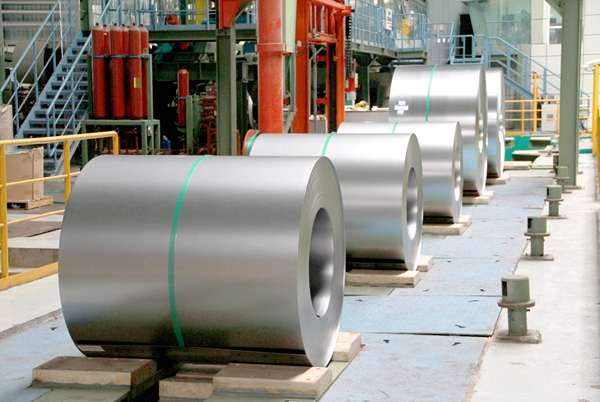
Ancient history
Non-ferrous metals were the first metals used for metallurgy by humans. Copper, gold and silver were all attractive materials for early humans, especially since these metals were not as susceptible to corrosion as ferrous metals.
Copper was the first metal to be forged and shaped into objects (during the ‘Copper Age’), while gold, silver and copper all replaced wood and stone for some early applications since they could be fashioned into a variety of forms. The rarity of these metals meant they were often used for luxury items. Creating bronze, by alloying copper with tin, led to the Bronze Age, which followed the Copper Age
Non-Ferrous Metals and Recycling
Non-ferrous scrap metals are usually recycled and have formed an important part of the metallurgy industry, where new metals are produced using scrap materials. This can include re-smelting and re-casting non-ferrous metals. Recycled non-ferrous metals are sourced from industrial scrap materials, scrapped technologies (such as copper cables) and even particle emissions.
Common Non-Ferrous Metals and Alloys
Because they include any metal that doesn’t include iron, there are lots of different non-ferrous metals and alloys. Here are some of the properties and common uses of some of the more common non-ferrous metals:
- Copper
Having been used by humans for thousands of years, copper is still widely used by industry. The addition of copper alloys, brass (copper and zinc) and bronze (copper and tin) have widened the uses for this non-ferrous metal further (see below for detail on these alloys).
The properties of copper and its alloys include high thermal conductivity, high electrical conductivity, good corrosion resistance, and high ductility.
These properties have allowed copper and its alloys to be used for heat exchangers and heating vessels, as an electrical conductor in wiring or motors, as a roofing material, for plumbing fittings, as well as for saucepans and statues.
Copper also oxidises to a green colour.
- Aluminium
Aluminium is an important metal that is used in a wide range of applications due to its low weight and ease of machining. Despite being a relatively expensive material, aluminium is also the base metal for many alloys.
Being corrosion resistant and a good conductor of heat and electricity (albeit less so than copper), as well as having good ductility and malleability, aluminium can require annealing as it becomes hard following cold working.
The light weight of aluminium makes it perfect for aerospace and automotive applications as well as for marine use in yachts. Aluminium is also found in bicycle frames, saucepans and drink cans.
- Lead
Lead has been used over the centuries for a range of applications, including for bullets, in fuels and even in paint. However, it was found to be unhealthy when released into the atmosphere, while other applications also caused harm to users.
Lead is the heaviest common metal and is resistant to corrosion. It also doesn’t react with many chemicals and is soft and malleable.
Although many of its former uses are no longer allowed, lead is still widely used for batteries, power cables, and acid tanks.
- Zinc
Zinc has been used for centuries as an alloying element, particularly to alloy steel for a range of purposes as well as alloying copper to create brass.
Galvanising materials with alloying elements offers them a greater resistance to rust, affording it uses for chain-link fencing, guardrails, suspension bridges, lampposts, metal roofs, heat exchangers, and car bodies. Zinc is also used as a sacrificial anode in cathodic protection (CP) and as an anode material for batteries. Zinc oxide is also used as a white pigment in paints and to disperse heat during rubber manufacture.
- Silver
Silver has been used as a precious metal for centuries. With the highest electrical conductivity, thermal conductivity and reflectivity of any metal, silver is also soft and malleable when heated and is highly resistant to corrosion.
Used for jewellery and currency, silver can also be found being used in solar panels, for water filtration, in electrical contacts and conductors as well as for stained glass and even in specialised confectionary.
- Gold
Another precious metal that has been used for jewellery and coinage, gold is the most malleable of metals as well as being ductile and resistant to corrosion and many other chemical reactions.
Its electrical conductivity has seen gold used in computer devices as well as for infrared shielding, for the production of coloured glass, for gold leaf and also for tooth restoration.
- Titanium
Titanium was first discovered in 1791 and offers good corrosion resistance and the highest strength-to-density ratio of any metallic element. Unalloyed, it is as strong as some steels yet less dense.
It can be alloyed with metals including iron and aluminium to create strong yet lightweight alloys for aerospace, automotive, agricultural, military, medical, and sporting uses as well as being used for jewellery and mobile phones.
Alloys
Alloys mix a metal with an element to improve the properties or aesthetic, such as with brass, which is a mixture of copper and zinc. Alloys can be either ferrous or non-ferrous in nature although non-ferrous metals may require a finish as protection or to improve the appearance of an alloyed product.
Common non-ferrous alloys include bronze and brass, which have been cast since the Bronze Age. These alloys melt at lower temperatures than ferrous materials and cast well, making them ideal for decorative applications. Despite being softer than steel, bronze and brass are both corrosion resistant, even in the presence of salt, and so are widely used for fittings on boats. Brass is also resistant to ‘galling,’ when the metal wears against itself. This means that brass can also be used for mechanical parts and machined to create items including locks, bearings and zippers. Bronze is harder than brass, although both are quite expensive as they rely on copper. Brass is created as an alloy of copper and zinc, while bronze is an alloy of copper with aluminium and/or nickel.
Conclusion
People have been using various non-ferrous metals for different uses for thousands of years. The applications for these versatile materials range from decorative uses through to electronics, aerospace and beyond.
Non-ferrous metals, while able to mimic the attributes of some ferrous metals, are usually chosen for their own unique attributes. These attributes include light weight, non-magnetic properties and corrosion resistance. These metals also tend to be more malleable than ferrous metals, allowing them to be used for decorative purposes, such as in jewellery or for making statues.
Mechanical and structural use
It is used in residential,yes commercial, industrial industry. Material selection for a mechanical or structural application requires some important considerations, including how easily the material can be shaped into a finished part and how its properties can be either intentionally or inadvertently altered in the process. Depending on the end use, metals can be simply cast into the finished part, or cast into an intermediate form, such as an ingot, then worked, or wrought, by rolling, forging, extruding, or other deformation process. Although the same operations are used with ferrous as well as nonferrous metals and alloys, the reaction of nonferrous metals to these forming processes is often more severe. Consequently, properties may differ considerably between the cast and wrought forms of the same metal or alloy.
Resource status
One of the characteristics of China’s nonferrous metal resources is that there are many composite ores, and some of them have low grade. Not only a variety of nonferrous metals often coexist together, but also some iron ores contain a large amount of nonferrous metals, such as Panzhihua Iron Ore contains a large amount of vanadium and titanium; Baotou Iron Mine contains a large amount of rare earth and niobium. Therefore, it is a very important task in the future to study new technologies, new processes, new equipment and new materials suitable for China’s resource characteristics and gradually establish a non-ferrous metal material system suitable for China’s situation.
China is rich in nonferrous metal resources and has a relatively complete variety. The reserves of tungsten, rare earth and other seven metals rank first in the world; The reserves of lead, nickel, mercury, molybdenum and niobium are also quite rich. In mineral resources, nonferrous metals are a major advantage of China. Before the founding of the people’s Republic of China, China’s nonferrous metals industry was very backward. No matter mines or factories, their equipment scale was very small. They could only produce gold, silver, tin, antimony, copper, lead, zinc and mercury, and many nonferrous metals could not be produced. Since 1949, China’s nonferrous metal industry has developed rapidly and has formed a production system from common nonferrous metals to rare metals with relatively complete varieties and processes. The mining, beneficiation, smelting and processing plants of various non-ferrous metals in China have a considerable scale, but there is still a certain gap compared with the world advanced level. Therefore, while building new nonferrous metal mines and factories, we also face the task of technical transformation of existing mines and factories, so as to give full play to China’s advantages in nonferrous metal resources and meet the needs of national economic development.
Mining and production
Nonferrous metal industry includes geological exploration, mining, beneficiation, smelting and processing departments. The content of nonferrous metals in ores is generally low. In order to obtain 1 ton of nonferrous metals, hundreds of tons or more of ores are often mined. Therefore, mining is an important basis for the development of non-ferrous metal industry. Nonferrous metal ores are often symbiotic with many metals. Therefore, it is necessary to reasonably extract and recover useful components and make comprehensive utilization in order to make rational use of natural resources. Many kinds of rare metals, precious metals, sulfuric acid and other chemical products are recovered in the process of processing non-ferrous metal ores or intermediate products, slag and smoke. In the process of non-ferrous metal production, a large amount of waste gas, waste water and waste residue are usually produced, which contains a variety of useful components, sometimes toxic substances, and some non-ferrous metals are also toxic. Therefore, in the process of producing non-ferrous metals, we must pay attention to comprehensive utilization and environmental protection.
Compared with steel production, generally speaking, non-ferrous metal production requires more energy.
According to statistics, if the energy consumption per ton of steel produced from ore is 100, magnesium is 1127, aluminum is 767, nickel is 455, copper is 352 and zinc is 206. Therefore, the problem of reducing energy consumption is very prominent in the non-ferrous metal industry. There are many extraction methods available in the mining, beneficiation, smelting, processing and recycling of non-ferrous metals. In terms of smelting process, it is usually divided into pyrometallurgy, hydrometallurgy and electrometallurgy. Pyrometallurgy generally has the advantages of large concentrate treatment capacity, making use of the combustion heat of sulfur in sulfide ore, and economically recovering precious and rare metals; But it is often difficult to achieve good environmental protection. Hydrometallurgy is often used to deal with polymetallic ores, low-grade ores and refractory ores; Electrometallurgical gold is suitable for the production of active metals such as aluminum, magnesium and sodium. These methods should be selected or combined according to the mineral composition treated. In order to strengthen the smelting process of non-ferrous metals, a series of new technologies, methods and equipment have been developed, such as high-pressure leaching, fluidized roasting, organic solvent extraction, ion exchange, metal thermal reduction, regional smelting, vacuum metallurgy, jet metallurgy
Rare metals
Plasma metallurgy, chlorination metallurgy, continuous casting and rolling, isostatic pressing, diffusion welding and superplastic forming have greatly enriched the theory and technology of metallurgy and continuously promoted the development of non-ferrous metal production.
Most non-ferrous metals are processed and used. Therefore, how to reasonably and effectively produce non-ferrous metal materials with good performance and high quality and low price in order to obtain the maximum social and economic benefits is a very important problem. With the progress of science and technology and the development of national economy, new requirements are constantly put forward for non-ferrous metal materials in terms of quantity, variety, quality and cost; It is not only required to provide structural materials and functional materials with better performance.
The requirements for its chemical composition, physical properties, microstructure, crystal state, processing state, surface and dimensional accuracy, product reliability and stability are also higher and higher. Generally speaking, the production of non-ferrous materials is developing in the direction of large-scale, continuity, automation and standardization, which requires high-precision and reliable process, equipment, control technology and finished product detection technology. Some new materials, such as semiconductor materials, composite materials and superconducting materials, and new technologies such as powder metallurgy and surface treatment have formed or are developing into a new technical field.
